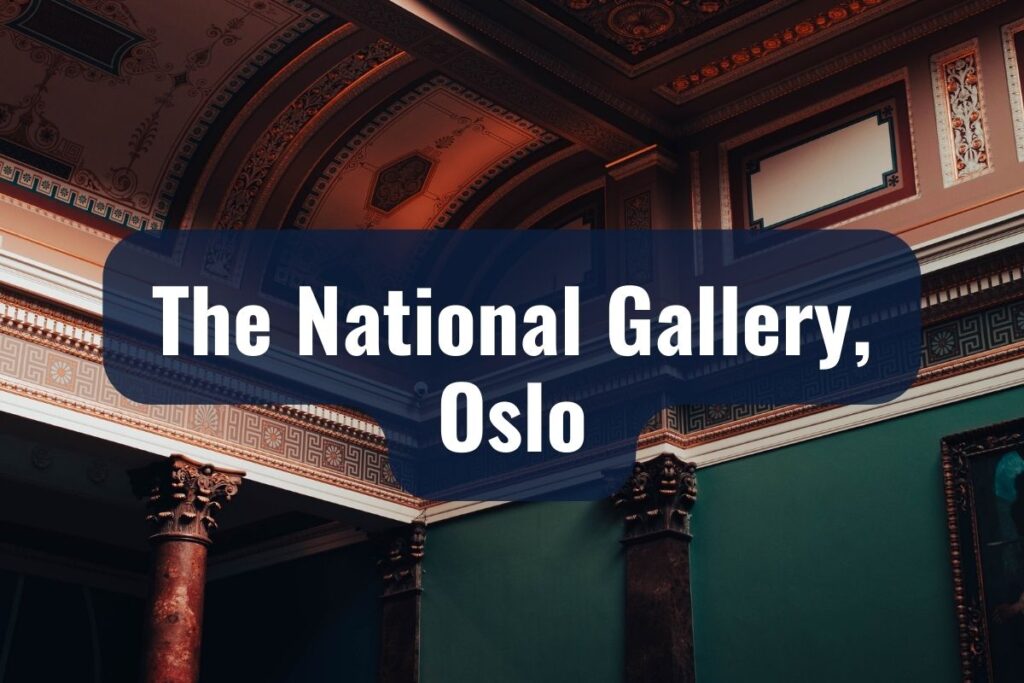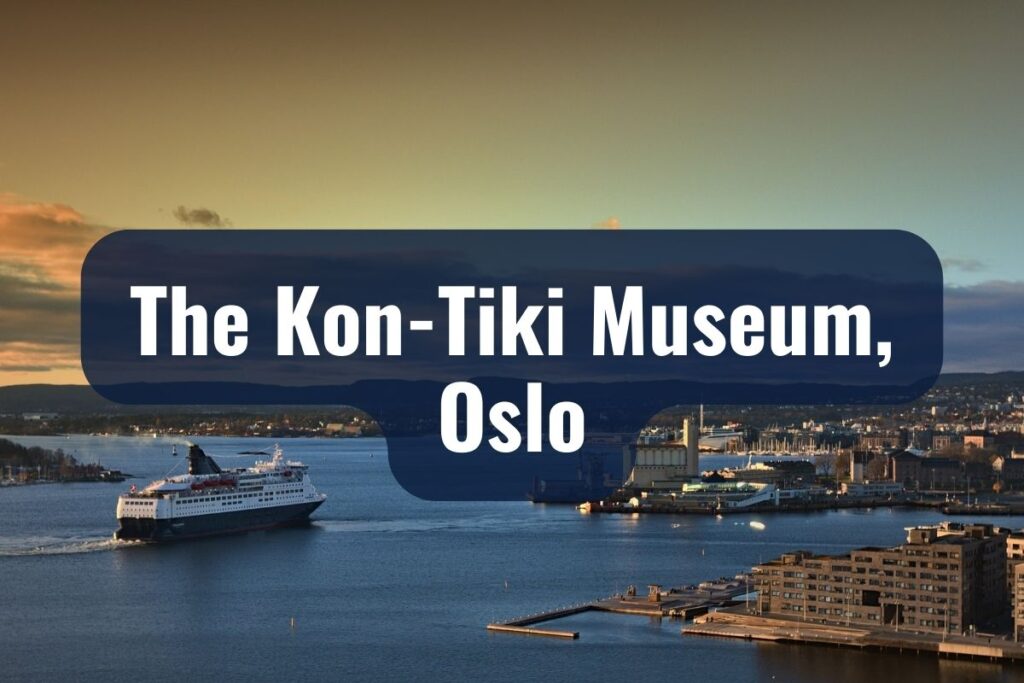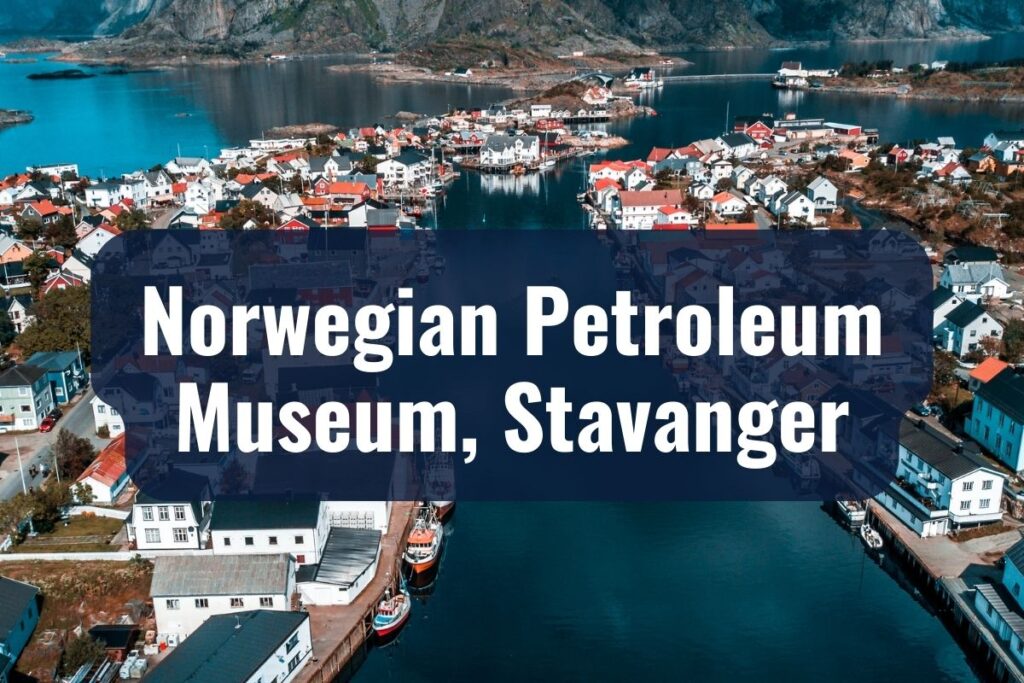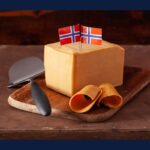For those seeking a deep dive into the heart of Norwegian culture and history, these institutions provide a portal. Whether it’s marveling at the craftsmanship of ancient Viking ships or understanding the significance of the oil industry in shaping modern Norway, each museum offers a unique lens through which one can view and appreciate the country’s diverse heritage.
These museums not only preserve the past but also serve as a bridge connecting it to the present. In the subsequent sections, we’ll traverse this bridge, visiting notable museums that offer insights into different facets of Norwegian life, history, and artistry.
Key Takeaways
- Norway’s essence is deeply captured within its diverse museums.
- Each museum provides unique insights into different facets of Norwegian history and culture.
- From art and science to maritime history and petroleum, these museums span a vast spectrum of topics.
- Interactive exhibits and dynamic spaces in these museums engage visitors of all ages.
- Museums in Norway bridge the historical past with the contemporary present, offering a holistic view of the nation’s identity.
The Viking Ship Museum, Oslo
Situated in the heart of Oslo, The Viking Ship Museum is more than just a repository of ancient artifacts; it’s a portal to an era where seafaring warriors and traders reigned supreme. Here, the very essence of Viking-era history is encapsulated, offering visitors a tangible connection to Norway’s maritime past.
Within the museum, one is greeted by the sight of well-preserved Viking ships, each with its tale. These ships once considered the pinnacle of Norse craftsmanship, sailed the vast oceans, becoming symbols of exploration, trade, and sometimes conquest. To stand in their presence is to be reminded of the audacity and spirit of the Vikings, who ventured into uncharted waters, seeking new lands and experiences.
But it’s not just about ships. The museum also houses a wealth of artifacts from the Viking Age, each echoing tales of daily life, rituals, and beliefs. Intricate wood carvings, tools, sledges, and even a horse cart are among the myriad items that paint a vivid picture of life during this epoch.
The significance of The Viking Ship Museum extends beyond the artifacts. It offers a holistic view of the Viking Age, making it an indispensable stop for anyone keen on understanding the roots of Norwegian maritime history and the adventures of its ancient seafarers.
The National Gallery, Oslo

Delving into the world of art, The National Gallery in Oslo stands as a beacon of Norway’s artistic heritage. As visitors tread its halls, they are transported through a timeline of creativity, witnessing the evolution of Norwegian and European artistry from the Renaissance to the present day.
The heart of this illustrious institution pulses with a rich collection of paintings, sculptures, and drawings. Each piece is a testament to the artistic fervor that has shaped the cultural landscape of Norway and the broader European region. From serene landscapes to evocative portraits, the artwork on display spans diverse genres and epochs, offering a comprehensive view of artistic movements and their proponents.
Among the gallery’s prized possessions are the works of Edvard Munch, Norway’s most celebrated artist. His iconic painting, “The Scream,” with its swirling colors and haunting visage, captures a universal sense of existential angst and has become synonymous with the artist’s exploration of human emotion. But Munch’s oeuvre doesn’t stand alone. The gallery is home to an array of masterpieces by other luminaries, reflecting the depth and breadth of Norwegian art.
Beyond Munch, The National Gallery boasts pieces from illustrious names such as Cézanne, Manet, and Picasso, placing Norwegian art in the wider context of European art history.
The Norwegian Folk Museum, Oslo
Nestled within the embrace of Oslo lies a museum that offers more than just artifacts—it offers a journey. The Norwegian Folk Museum, with its sprawling open-air display, is a living tapestry of Norway’s cultural and historical essence. It’s a place where history comes alive, and the traditions of yesteryears resonate in the present.
As one steps into the museum, it’s easy to be transported back in time. The historic buildings, each meticulously preserved and restored, represent diverse regions of Norway. From the quaint wooden stave churches, with their intricate carvings harking back to the Middle Ages, to the charming townhouses reflecting urban life of bygone eras, every structure tells a story.
But the museum isn’t just about buildings. Its vast collection includes artifacts that offer a glimpse into the everyday lives of the Norwegian people over the centuries. Traditional costumes, handcrafted tools, household items, and even folk music instruments are showcased, each echoing the rhythms of traditional Norwegian life.
A significant highlight is the insight the museum provides into the Sami culture. The indigenous Sami people, with their unique customs, traditions, and way of life, have been an integral part of Norway’s rich tapestry.
Through exhibits dedicated to them, visitors can gain an understanding of their nomadic lifestyle, their close relationship with reindeer, and the challenges and joys of life in the Arctic regions.
The Kon-Tiki Museum, Oslo

In the realm of adventure and exploration, few tales are as riveting as that of Thor Heyerdahl and his audacious Pacific Ocean raft voyage. The Kon-Tiki Museum in Oslo stands as a testament to this indomitable spirit of exploration, showcasing the epic journey of a man who dared to challenge prevailing theories and embark on a voyage into the unknown.
Named after the raft used in Heyerdahl’s 1947 expedition, the Kon-Tiki Museum transports its visitors to the vast expanse of the Pacific Ocean, where the winds, waves, and currents tested the mettle of the explorer and his crew. The centerpiece of the museum is the original Kon-Tiki raft, built using traditional techniques and materials, evoking awe and admiration for the sheer tenacity of its crew.
Yet, the Kon-Tiki expedition was just one chapter in Heyerdahl’s life of exploration. The museum also showcases artifacts and displays related to his other expeditions, such as the Ra, Ra II, and Tigris voyages.
Through these exhibits, one gains insight into Heyerdahl’s theories on early oceanic migrations, his dedication to environmental causes, and his relentless quest for knowledge.
Accompanying the physical artifacts are a plethora of photographs, films, and personal items that offer a more intimate glimpse into Heyerdahl’s expeditions. From the challenges faced during the voyages to the moments of camaraderie among the crew, these exhibits paint a vivid picture of life on the high seas.
The Arctic and Antarctic Museum, Tromsø
The polar regions, with their mesmerizing beauty and stark landscapes, have long been a source of fascination and mystery. At the crossroads of this allure lies The Arctic and Antarctic Museum in Tromsø, a beacon illuminating the enigmatic world of the poles. Located well within the Arctic Circle, Tromsø itself offers a fitting backdrop to a museum dedicated to the extreme ends of our planet.
One of the primary draws of the museum is its comprehensive exhibits on polar exploration. Chronicling the heroic and often perilous journeys of explorers who ventured into these icy realms, the museum pays homage to the indomitable spirit of human endurance and curiosity.
Whether it’s the tale of Roald Amundsen, the first person to reach both poles or the fateful expedition of Sir John Franklin, each story is a testament to the allure of the unknown.
Yet, the museum’s scope extends beyond human exploration. The Arctic and Antarctic regions are vibrant ecosystems, teeming with life adapted to the harshest of conditions.
Through a series of displays, the museum introduces its visitors to the unique flora and fauna of these regions. From the majestic polar bears and elusive narwhals of the Arctic to the playful penguins and massive whales of the Antarctic, the biodiversity of the poles is showcased in all its glory.
Furthermore, the museum delves into the cultural and historical significance of the Arctic region to Norway. It sheds light on the Sami people, their traditions, and their intricate relationship with this frigid landscape.
Norwegian Petroleum Museum, Stavanger

Stavanger, a picturesque city on Norway’s southwestern coast, might evoke images of serene fjords and historic architecture. However, it also stands as the epicenter of Norway’s modern transformation – a testament to the nation’s journey as a leading oil and gas powerhouse.
The Norwegian Petroleum Museum in Stavanger is a monument to this transformation, providing an immersive insight into the world of petroleum, its extraction, and its indelible impact on Norwegian society.
Upon entering the museum, one is immediately struck by its architectural design, mirroring the offshore drilling platforms that dot the North Sea. Within its walls, visitors embark on a journey that spans the inception, growth, and prospects of Norway’s oil industry.
Interactive exhibits delineate the complex processes of exploration, drilling, and production. Here, one can experience firsthand the intricacies of seismic surveys, the marvel of subsea technology, and the challenges of extracting oil from the very bowels of the Earth. The museum does a commendable job of demystifying the technical aspects, making it accessible to both young and old.
Beyond the technological, the museum delves deep into the socio-economic impact of the petroleum industry. It sheds light on how the discovery of oil transformed Norway from a predominantly agrarian society to one of the world’s most prosperous nations. This narrative intertwines with the lives of those who work in the industry, their stories offering a human perspective to the larger tale of national progress.
However, in an age where environmental concerns are paramount, the museum doesn’t shy away from addressing the challenges. Through thought-provoking exhibits, it touches upon the environmental implications of oil extraction and Norway’s commitment to sustainable practices.
Bergen Maritime Museum
Bergen, with its deep fjords and a history intricately linked to the sea, has always been at the heart of Norway’s maritime legacy. The Bergen Maritime Museum stands as a sentinel to this legacy, chronicling the profound relationship between the Norwegians and the vast waters that surround them.
Stepping into the museum, one is immediately transported through time. The diverse exhibits showcase a maritime history that spans from the age of the Vikings to the contemporary era of oil exploration. Every artifact, every model ship, and every document tells a tale of adventures on the high seas, of brave explorers, skilled craftsmen, and astute traders.
One of the museum’s most captivating sections is dedicated to the Hanseatic League, highlighting Bergen’s pivotal role in this powerful trading confederation during the Middle Ages. Here, visitors can grasp the significance of Bergen as a trading hub, its docks bustling with ships from distant lands, and its markets filled with goods from across Europe.
But it’s not just historical ships and trade that the museum celebrates. It also delves into the evolution of shipbuilding, showcasing the craftsmanship and innovation that enabled vessels to evolve from simple wooden boats to the sophisticated steel giants of today. The intricacies of naval architecture, the challenges of navigation, and the romance of life at sea are all explored with meticulous detail.
Furthermore, the museum acknowledges the perils of the sea. Through poignant exhibits, it pays tribute to the sailors and fishermen who braved the treacherous waters, sometimes paying the ultimate price. Their tales of valor and sacrifice add a somber note, reminding visitors of the sea’s unpredictable nature.
Munch Museum, Oslo
In the vibrant tapestry of Norwegian art, Edvard Munch occupies a place of singular distinction. The Munch Museum in Oslo, dedicated to the life and works of this iconic artist, stands as a monumental tribute to his genius, capturing the breadth and depth of his artistic journey.
The museum, nestled in the heart of Oslo, houses one of the most comprehensive collections of Munch’s work in the world. As one traverses its halls, they are enveloped by the evocative world Munch created.
From his early paintings, reflecting the influences of Symbolism and Impressionism, to his later, more introspective works, the museum provides a panoramic view of Munch’s evolution as an artist.
Arguably the most renowned among his creations is “The Scream,” a piece that transcends cultural and temporal boundaries with its raw portrayal of human angst. But while “The Scream” might be the most recognized, the museum houses a plethora of other masterpieces, each echoing Munch’s unique perspective on life, love, and death.
Beyond the paintings, the museum offers a glimpse into Munch’s world. Through a collection of his sketches, sculptures, graphic art, and personal effects, visitors gain insight into the man behind the canvas. His letters, photographs, and personal artifacts provide a more intimate understanding of his inspirations, struggles, and the milieu in which he created his iconic works.
In recent times, the museum has also focused on placing Munch’s work in dialogue with contemporary art. By showcasing the works of modern artists alongside Munch’s, the museum emphasizes the enduring relevance of his themes and the profound influence he continues to exert on subsequent generations of artists.
Trondheim Science Museum

In the historic city of Trondheim, known for its medieval architecture and scenic beauty, stands a beacon of innovation and curiosity: The Trondheim Science Museum. A hub of exploration and education, this museum merges the wonders of science with interactive experiences, ensuring that the world of knowledge is accessible and engaging to all who enter its doors.
At its core, the Trondheim Science Museum is a celebration of inquiry. Its exhibits span a broad spectrum of scientific domains, from the intricacies of human biology to the vastness of outer space. Yet, regardless of the subject, the emphasis is always on interaction and hands-on learning. Here, science is not a mere spectator sport; visitors are encouraged to touch, experiment, and question.
| Feature | Description |
| Location | Trondheim |
| Highlight | Interactive experiences across various scientific domains |
| Standout Exhibit | Planetarium showcasing the mysteries of the universe |
| Focus | Hands-on learning, exploration, and innovation |
| Special Zones | Dedicated areas for children to nurture their budding interest in science |
| Educational Initiatives | Workshops, guided tours, and interactive sessions promoting science appreciation |
One of the standout features of the museum is its planetarium. With state-of-the-art technology, the planetarium whisks visitors away on a cosmic journey, exploring the mysteries of the universe, from the shimmering constellations that adorn our night sky to the distant galaxies that challenge our understanding of space and time.
But the museum is not just about the cosmos. Its exhibits delve deep into the wonders of our planet. From the complexities of ecosystems to the marvels of technology, each section is designed to spark curiosity.
Interactive workshops allow visitors to dive deeper, be it through coding a robot, understanding the physics behind everyday phenomena, or even getting a glimpse into the future of sustainable technology.
For the younger visitors, the museum is a treasure trove of discovery. Dedicated zones cater to children, offering them a safe and stimulating environment to unleash their imagination and nurture their budding interest in science.
Lillehammer Art Museum
Nestled amidst the scenic beauty of Lillehammer, a town synonymous with the Winter Olympics of 1994, the Lillehammer Art Museum emerges as a cultural gem. A harmonious blend of architecture, art, and history, the museum stands as a canvas showcasing Norway’s rich artistic tradition and its contemporary vibrancy.
The exterior of the Lillehammer Art Museum is, in itself, an ode to architectural brilliance. Modern designs meld seamlessly with the town’s historic backdrop, offering visitors a visual treat even before they set foot inside. And once within, the museum unfolds as a tapestry of Norwegian artistry, spanning generations and genres.
From the romantic nationalistic paintings of the 19th century, capturing Norway’s majestic landscapes and daily life, to the avant-garde movements of the 20th century, the museum’s collection is both vast and varied. Each hall and corridor resonates with the voices of artists, both renowned and emerging, their works reflecting the changing zeitgeist of the times.
Among the museum’s prized possessions are pieces from the likes of Erik Werenskiold and Harriet Backer, artists who played pivotal roles in shaping Norway’s artistic identity. Their masterpieces, juxtaposed with contemporary works, provide a unique insight into the evolution of Norwegian art, from its traditional roots to its modern manifestations.
But the Lillehammer Art Museum is more than just a repository of art. It is a dynamic space, continuously evolving and engaging with the community.
Regular exhibitions showcase the works of contemporary artists, offering them a platform to share their perspectives with a wider audience. Furthermore, the museum is deeply committed to art education. Workshops, guided tours, and interactive sessions are regularly organized, fostering a love for art among visitors of all ages.
Norway is often celebrated for its natural wonders and Viking legacy. Yet, as one traverses the country, it becomes evident that its true essence is also captured within the walls of its numerous museums.
From the haunting allure of Munch’s masterpieces to the scientific wonders housed in Trondheim, each museum tells a story, capturing a fragment of Norway’s multifaceted identity.
The museums are not mere buildings filled with artifacts; they are living entities, evolving and engaging with the world around them. They are spaces of reflection and education, of admiration and inspiration. They bridge the past and the present, providing insights into the country’s journey from its ancient roots to its modern aspirations.
For foreigners in Norway, these museums offer a unique window into the nation’s soul. They tell tales of exploration and innovation, of art and industry, of challenges faced and triumphs achieved. Each visit becomes an opportunity to connect, understand, and appreciate Norwegian culture’s depth and diversity.
In the end, as one stands amidst the hallowed halls of these institutions, it becomes evident that to truly know Norway, one must delve beyond its scenic vistas and into the treasure troves of knowledge and artistry that its museums so generously offer.


